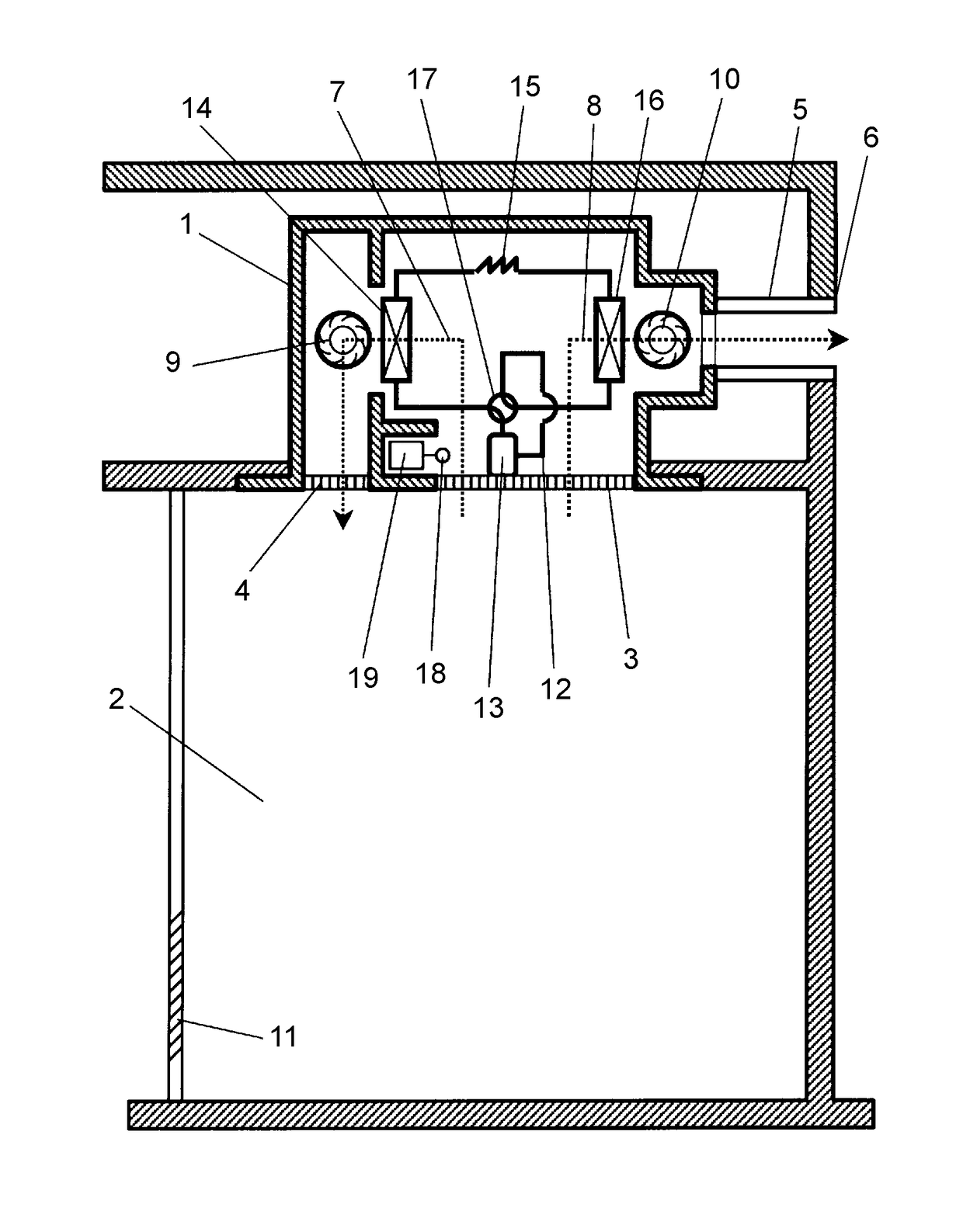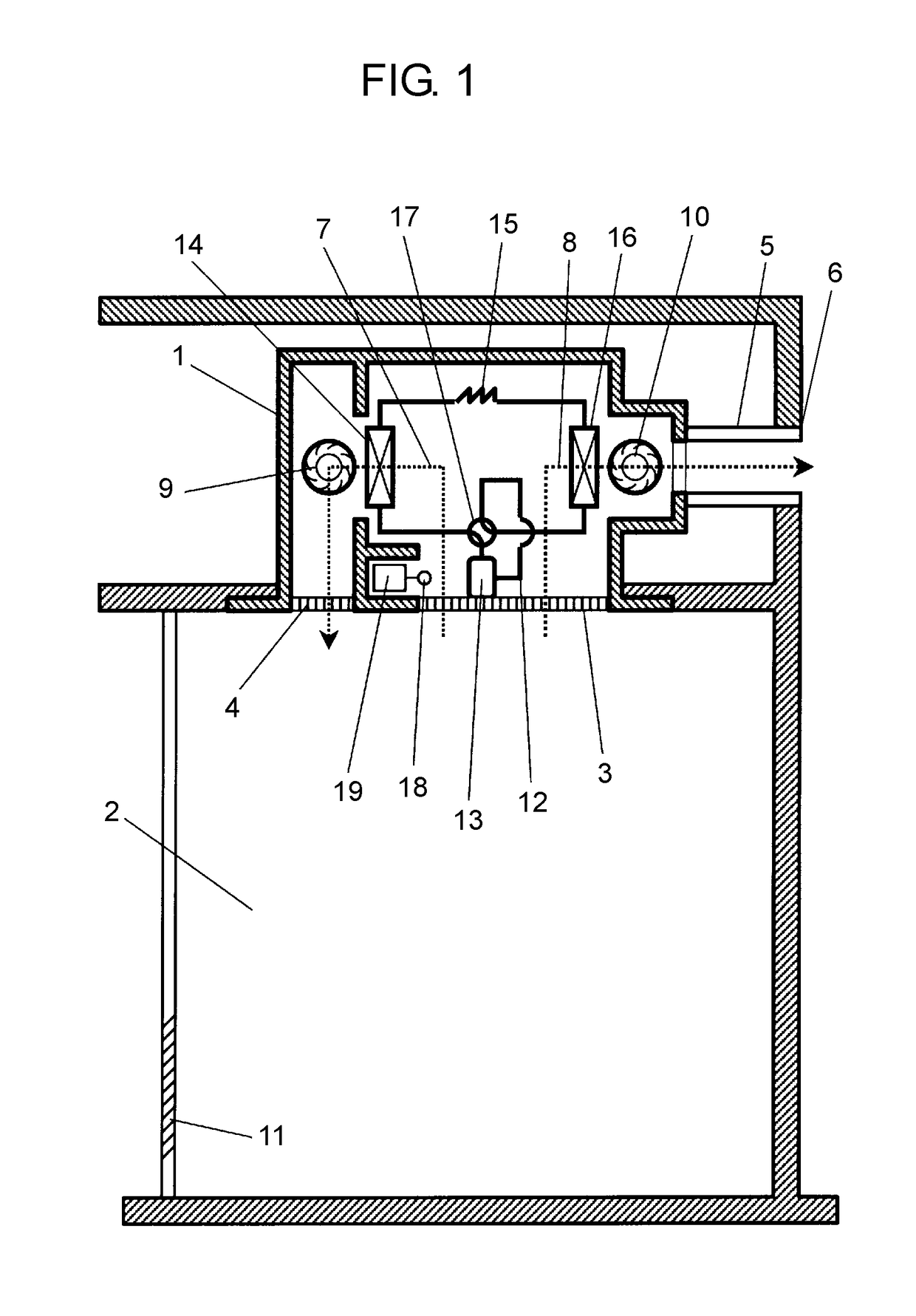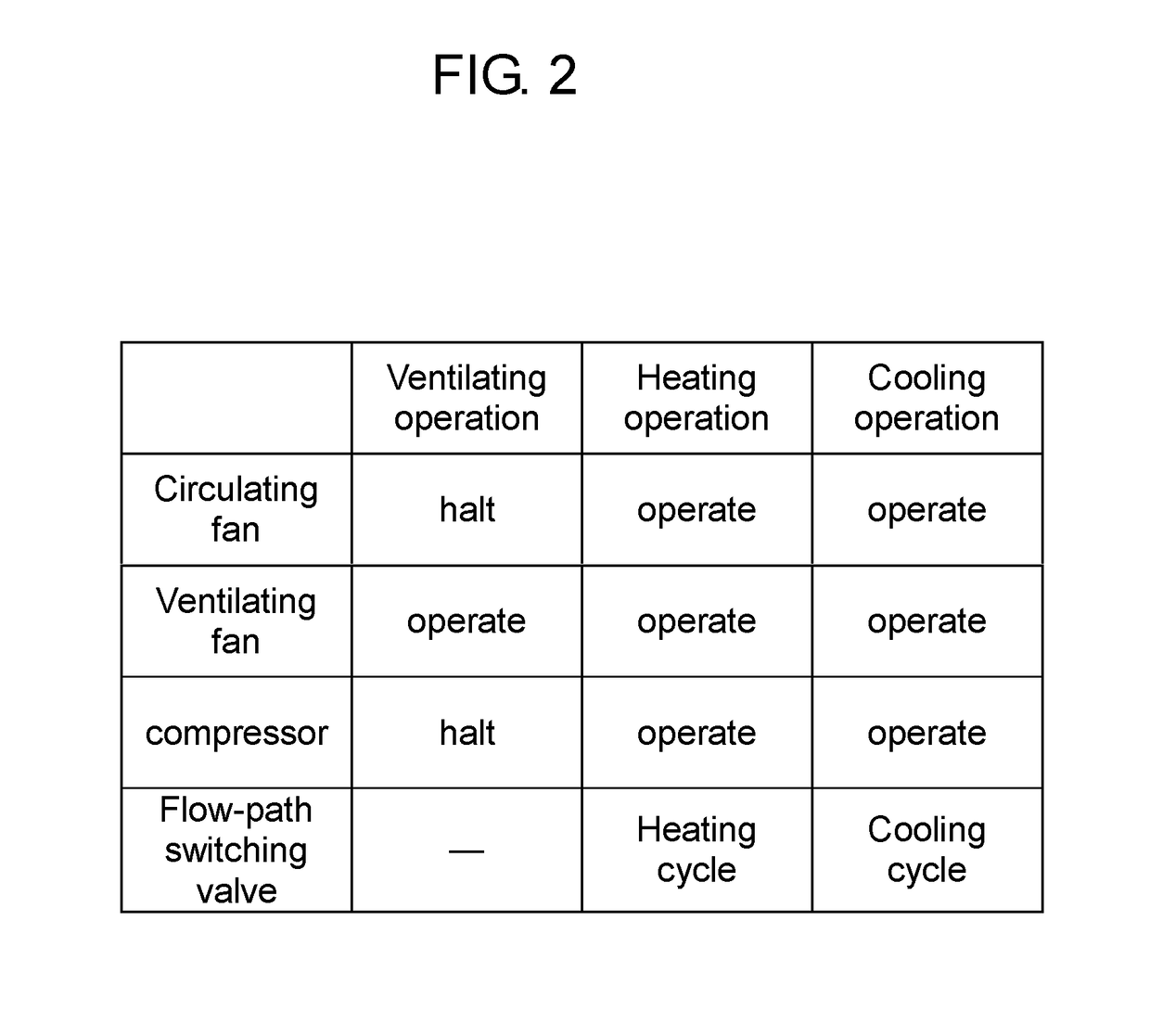Bathroom air-conditioner
a technology for air conditioners and bathrooms, applied in lighting and heating apparatus, ventilation systems, heating types, etc., can solve the problems of reducing the efficiency of air conditioners and increasing heat collection, so as to reduce the loss of heat dissipation to the air discharged from the bathroom to the outside, reduce the amount of air blowing, and increase the enthalpy efficiency of radiators.
- Summary
- Abstract
- Description
- Claims
- Application Information
AI Technical Summary
Benefits of technology
Problems solved by technology
Method used
Image
Examples
embodiment 1
[0048]FIG. 1 shows an air-course and a refrigerant circuit of a bathroom air-conditioner in accordance with the first embodiment of the present invention. As shown in FIG. 1, main unit 1 of the bathroom air-conditioner is placed under the roof of the bathroom, and includes intake port 3 and blowout port 4 open on its underside so that they communicate with bathroom 2. The intake port 3 and blowout port 4 open to bathroom 2 at different places from each other. A first end of evacuating duct 5 is connected to main unit 1, and a second end thereof communicates with outer blowout port 6. Circulating air-course 7 and ventilating air-course 8 are formed in main unit 1, and intake port 3 communicates with blowout port 4 through circulating air-course 7, and sintake port 3 communicates with evacuating duct 5 through ventilating air-course 8. Circulating fan 9 is placed in circulating air-course 7, and ventilating fan 10 is placed in ventilating air-course 8.
[0049]Circulating fan 9 communica...
embodiment 2
[0091]A method of increasing an efficiency of energy is demonstrated hereinafter. This method increases an amount of heat to be collected during the heating operation. FIG. 7 shows schematically a sectional view of a bathroom air-conditioner in accordance with the second embodiment of the present invention.
[0092]The bathroom air-conditioner shown in FIG. 7 differs from that shown in FIG. 5 in the following points: Partition 52 is newly provided for separating circulating air-course 7 from ventilating air-course 8; Compressor 13, decompressing mechanism 15, and controller 54 are placed in ventilating air-course 8; Ventilating fan 10, heat absorber 24 are placed in this order from outer blowout port 6; and no flow-path switching valve is provided because the bathroom air-conditioner shown in FIG. 7 only implements the heating operation.
[0093]The bathroom air-conditioner shown in FIG. 7 comprises the following elements: shutter plate 53 for switching an air-course in ventilating air-co...
PUM
 Login to View More
Login to View More Abstract
Description
Claims
Application Information
 Login to View More
Login to View More - R&D
- Intellectual Property
- Life Sciences
- Materials
- Tech Scout
- Unparalleled Data Quality
- Higher Quality Content
- 60% Fewer Hallucinations
Browse by: Latest US Patents, China's latest patents, Technical Efficacy Thesaurus, Application Domain, Technology Topic, Popular Technical Reports.
© 2025 PatSnap. All rights reserved.Legal|Privacy policy|Modern Slavery Act Transparency Statement|Sitemap|About US| Contact US: help@patsnap.com



